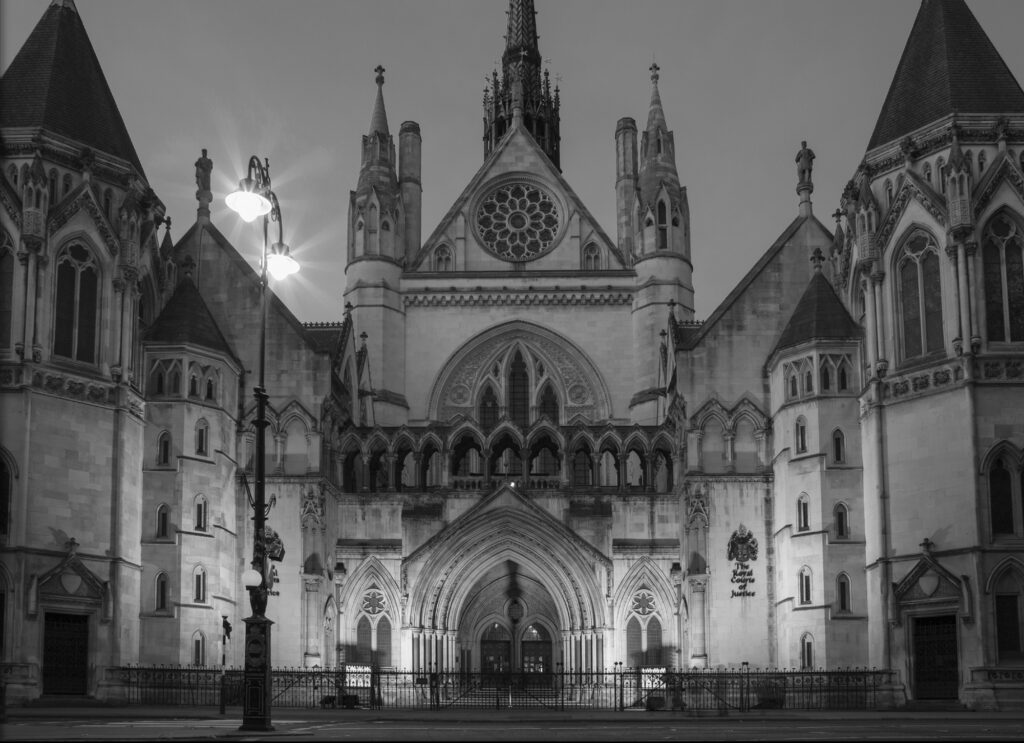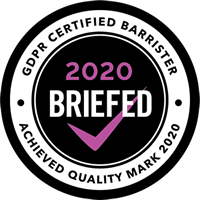
Patrick Harty and Andrew Thompson QC consider the Court of Appeal’s decision in the Bridgehouse v BAE litigation in relation to the arbitrability of claims under s1028(3) CA 2006
20th July 2020
In the latest decision in the long running Bridgehouse v BAE litigation, the Court of Appeal considered the correct approach to arbitrability and the circumstances in which statutory claims will be incapable of arbitration (Bridgehouse (Bradford No. 2) Ltd v BAE Systems plc [2020] EWCA Civ 759). In a clear and concise judgment, the court set out the applicable test and applied it in a way that shows that arguments that a claim is not arbitrable will rarely succeed. It also reaffirmed that the decision in Fiona Trust & Holding Corporation v Privalov [2007] UKHL 40 continues to govern the construction of arbitration clauses.
Background
On 20 December 2012, the respondent, BAE Systems plc (BAE) entered into a contract (Contract) with the appellant, Bridgehouse (Bradford No. 2) Ltd (BB2), containing an arbitration clause applicable to disputes ‘arising out of the provisions’ of the Contract, and a clause giving BAE the right to terminate the contract by notice in writing in the event (among others) that BB2 was struck off the register.
BB2 was struck off the register in May 2016 and BAE served notice on BB2 terminating the Contract. BB2 was later restored to the register and sought to challenge the validity of the termination of the Contract in arbitration proceedings, arguing that any effective termination had to be reassessed retrospectively as a result of its restoration to the register under s 1028(1) CA 2006. This argument was rejected both by the arbitrator and on appeal to the High Court.
On 3 August 2018, BB2 issued a claim seeking relief under s 1028(3) CA 2006 by way of a court order that BAE’s termination of the Contract was of no effect or, in the alternative, that BAE be ordered to enter into a new agreement with BB2 on the same terms as those contained in the Contract. BAE applied for this claim to be stayed under s 9 Arbitration Act 1996 and, at first instance, Stuart Issacs QC (sitting as a Deputy Judge of the Chancery Division) concluded that the claim should be stayed.
BB2 challenged that decision on the grounds that:
(1) the arbitration clause in the Contract did not extend to its claim under s 1028(3) CA 2006; and
(2) such matters were not in any event susceptible to arbitration.
Did the arbitration clause extend to claims under s 1028(3)?
The arbitration clause was in a fairly standard form covering disputes ‘arising out of the provisions’ of the Contract. The court held that the correct approach to the construction of arbitration clauses remained that set out in Fiona Trust, ie that the court should start “from the assumption that the parties, as rational businessmen, are likely to have intended any dispute arising out of the relationship into which they have entered or purported to enter to be decided by the same tribunal” and this should apply save where “the language makes it clear that certain questions were intended to be excluded from the arbitrator’s jurisdiction”. Given that there was no question of the Contract making it clear that questions as to relief under s 1028(3) were excluded, the arbitration clause applied.
While this might have been thought to be an obvious conclusion, BB2 had sought to argue that the Fiona Trust approach was in some way undermined by the more literal approach to construction which BB2 asserted was mandated by the Supreme Court’s decision in Arnold v Britton [2015] AC 1619. The Court of Appeal’s judgment makes clear that that is not so. The Court of Appeal also made clear that the Fiona Trust approach applied notwithstanding the fact that the Contract also contained an exclusive jurisdiction clause.
Are applications for relief under s 1028(3) capable of being settled by arbitration?
The court analysed the relevant case law in relation to arbitrability and adopted the approach that a statutory claim would be arbitrable unless either: (1) the statute prohibited reference of such matters to arbitration; or (2) arbitration was precluded by public policy considerations. It concluded that, in relation to s 1028(3), neither was the case.
Newey LJ, giving the lead judgment, held that it was clear that CA 2006 does not itself, either expressly or by implication, prohibit reference to arbitration of matters arising on an application for relief under s 1028(3). Following Wealands v CLC Contractors Ltd [2000] 1 All ER (Comm) 30, the fact that a statutory power was given to the court did not mean that an arbitrator, to whom a dispute was properly agreed to be referred, did not have a similar power.
Moving on to examine the public policy considerations, the court adopted the approach of Longmore LJ in Fulham Football Club (1987) Ltd v Richards [2011] EWCA Civ 855 that the Arbitration Act 1996 gave primacy to party autonomy and that was only “subject to such safeguards as are necessary in the public interest” which was a “demanding test”. Thus, the fact that the parties had agreed to the dispute being arbitrated was an important starting point. That choice should be respected unless there were compelling reasons not to do so.
The court then explained that while, as noted in Fulham, many aspects of the statutory regime governing companies are immune from arbitration and lie within the exclusive jurisdiction of the court, such as applications for restoration to the register under s 1029 CA 2006 or for a winding up order. Such applications affect a company’s status and have implications far beyond the company and any particular counterparty. However, similar issues do not arise in relation to relief under s 1028(3) or (for court restorations) s 1032(3) CA 2006. Relief pursuant to s 1028(3) or s 1032(3) does not affect the company’s status and would normally be an essentially private matter affecting nobody but the company and one or more specific individuals or entities. These sections were comparable to internal disputes which are the subject of unfair prejudice petitions under s 994 CA 2006 and which were held to be arbitrable in Fulham.
Newey LJ went on to state that applications under ss 1028(3) or 1032(3) were not obviously unsuited to be decided by an arbitrator. Such applications required consideration of what directions and provisions were just for placing the company and all other persons in the same position as if the company had not been dissolved or struck off the register, and arbitrators may be called on to decide comparable questions in the context of unfair prejudice or partnership disputes or contribution claims. An arbitrator would therefore be well capable of deciding these issues in applications under s 1028(3).
Finally, while applications for relief under ss 1028(3) and 1032(3) could potentially have implications for third parties (who could not be bound by the outcome of an arbitration), this was in practice the exception rather than the rule and there was no reason to think that any third party would be affected by the grant of the relief which BB2 sought. The possibility of third parties being impacted did not in any event necessarily mean that applications for such relief were not susceptible to arbitration (Fulham followed). As the Singapore Court of Appeal had stated in Tomolugen Holdings Ltd v Silica Investors Ltd [2015] SGCA 57, any procedural complexity that might result from the limitation on the power of arbitrators to make orders affecting non-parties would not of itself generally be capable of giving rise to non-arbitrability. Further, any obstacles now faced by BB2 as a result of its decision not to advance a claim under s 1028(3) in the original arbitration merely meant that the claim might fail, not that it was non-arbitrable.
What to take away
Patrick Harty comments:
The Court of Appeal’s judgment provides welcome clarity as to the law in this area in a number of respects.
First, to the extent that there might have been any doubt, it makes clear that the Fiona Trust approach to the construction of arbitration clauses continues to apply notwithstanding the recent decisions of the Supreme Court in relation to the correct approach to the construction of contracts (such as Rainy Sky SA v Kookmin Bank [2011] UKSC 50, Arnold v Britton, Wood v Capita Insurance Services Ltd [2017] UKSC 24). Accordingly, arguments that an arbitration clause is insufficiently broad to cover a claim will continue to be very difficult, at least in single contract cases (in multi-contract cases the position is potentially different – see the decision in Terre Neuve SARL v Yewdale Ltd (14) Driss Mriouah [2020] EWHC 772 (Comm) for a recent analysis of the cases on this issue).
Second, it provides a clear statement of the test for when a statutory claim will not be arbitrable (namely: (1) whether the statute prohibits arbitration; and (2) whether it is precluded by public policy considerations) and, perhaps more importantly, a clear steer that the courts will be slow to find that that test is met. Neither procedural complexity nor limitations on the remedies available to an arbitrator will be sufficient to exclude arbitration.
Finally, it is notable that, while generally endorsing the primacy of party autonomy, Newey LJ observed that there “may be room for argument” as to whether the decision of Males J (as he then was) in Nori Holding Ltd v Public Joint-Stock Company ‘Bank Otkritie Financial Corporation’ (Rev 1) [2018] EWHC 1343 (Comm) was correct. In that case Males J had held that statutory insolvency claims were arbitrable whereas the Singapore Court of Appeal had reached the opposite conclusion in Larsen Oil and Gas Pte Ltd v Petropod Ltd [2011] SGCA 21. Perhaps unsurprisingly, Males LJ appears to have harboured no such doubts about his decision in Nori but this is one area where there is clearly potential for further appellate consideration of the issue of arbitrability.
However, outside of an insolvency context, the Court of Appeal’s decision in Bridgehouse v BAE shows that commercial disputes will rarely be held not to be arbitrable.
Patrick Harty appeared for the respondent, BAE Systems plc.
Andrew Thompson QC comments:
Bridgehouse v BAE indicates how the courts are likely to tackle questions of arbitrability in relation to the many other specific statutory powers given to ‘the court’ under the companies legislation. Not only is it clear that such references to “the court” will not be enough to exclude arbitration, it is also not enough that the relevant statute is motivated by public policy considerations which the tribunal exercising the statutory jurisdiction will have to consider (see Newey LJ at para 59). It appears that arbitration may be excluded where the relief inherently affects status so that the application for relief is inherently not a private matter, on which basis claims for winding up and restoration of a company to the register are not arbitrable (see para 59). However, each particular statutory jurisdiction will have to be considered specifically. One major unresolved issue is whether statutory derivative claims are arbitrable. Applying the approach adopted in Bridgehouse v BAE and in Fulham, it is suggested that statutory derivative claims are in principle arbitrable, and so can be brought by way of arbitration in those cases where the relevant parties are all bound by an arbitration clause, eg where there is a shareholders agreement to which both the company and the defendant director are party. However, the issue of the arbitrability of derivative claims is relatively complex and open to argument.
This article first appeared in FromCounsel



